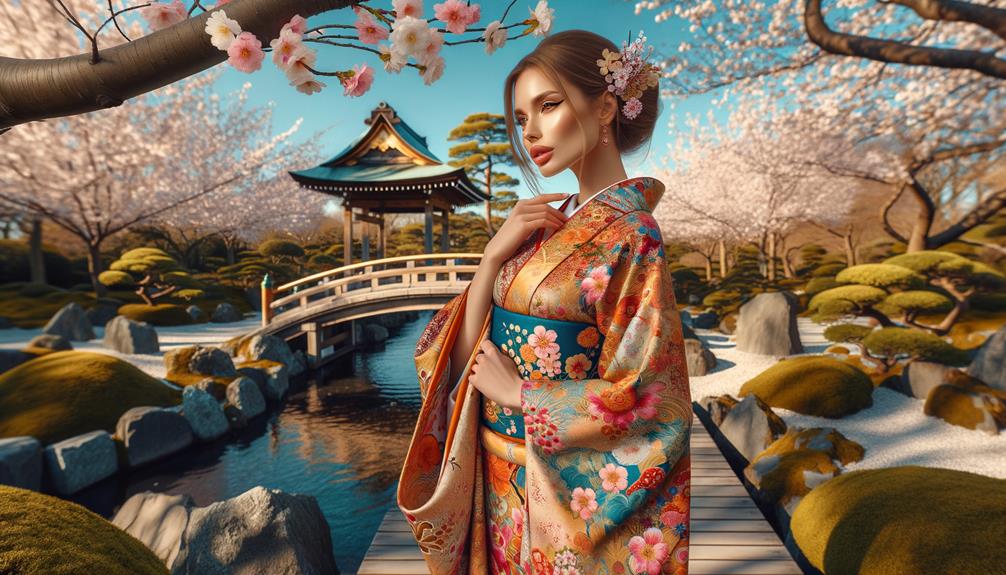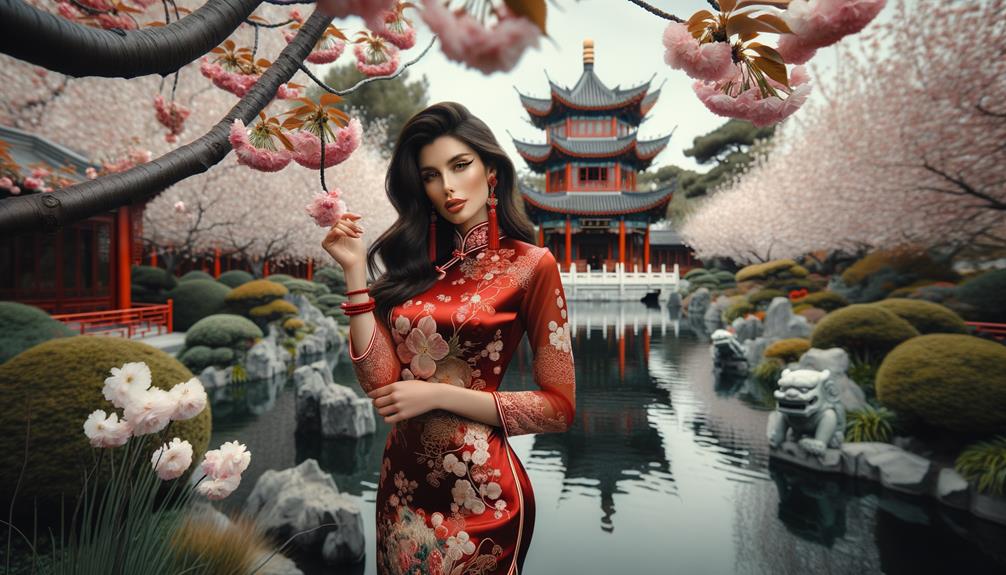The Thobe, an Arab men's robe, has undergone significant changes in design and purpose spanning centuries. This garment, rooted in tradition, manages to stay culturally relevant today. The Thobe transcends mere clothing; it embodies layers of cultural and historical meaning often overlooked. Whether casual daily wear or an intricately embroidered piece for special occasions, each Thobe conveys a distinct narrative. This simple robe's profound symbolism of identity stems from its representation of Arab heritage and values.
History and Origins
The thobe, known as a dishdasha or kandura, has deep-rooted ties to Arabian Peninsula history and culture. Reflecting on its origins reveals how this traditional Arab men's robe endures as both a modest and cultural symbol. For ages, Arab men have worn the thobe, appreciating its simplicity and elegance, seamlessly integrating it into daily Middle Eastern life.
This robe transcends mere clothing; it represents resourcefulness, designed for the region's harsh climate. The flowing, lightweight thobe offers comfort while respecting cultural modesty. Though evolving, it remains true to its heritage, a rare blend of innovation and tradition.
Delving into the thobe's background fosters a profound appreciation for its role in Arab culture. More than just a garment, it's a living piece of history embodying the enduring spirit and traditions of the Arab world.
Styles and Varieties
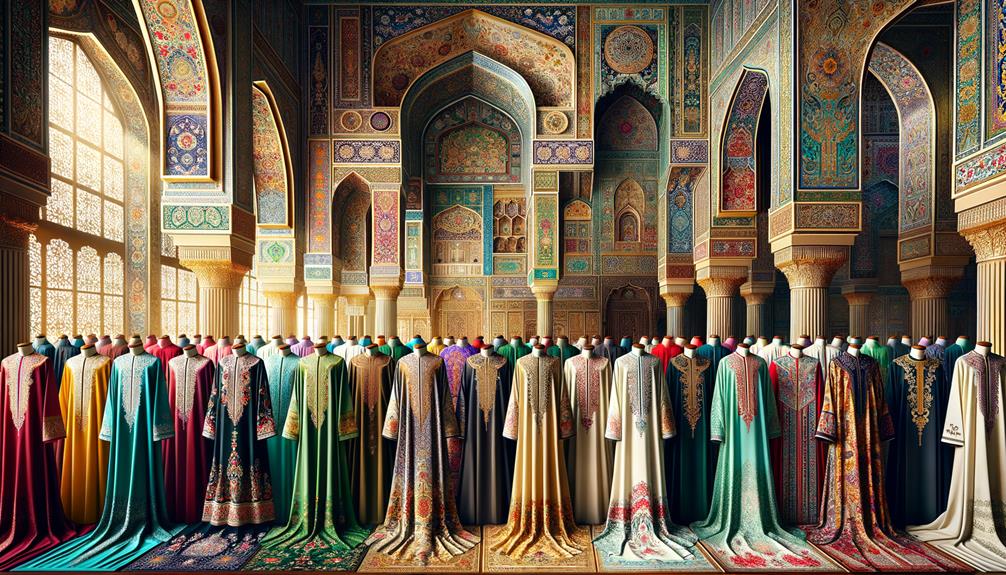
From a storied heritage, let's explore the thobe's evolution and its continued significance. As an observer, I'm struck by the diversity this iconic Arabian garment offers. Classic dishdashas with their long sleeves and flowing lines remain popular for many Muslim men. Yet, kaftans blending tradition with contemporary flair cater to those seeking innovation within Islamic fashion.
Thobes are no longer just about simplicity; they now feature intricate embroidery and elegant cuts suitable for any occasion – formal events, daily wear, or special celebrations. Luxurious fabrics like cotton, linen, and silk elevate the experience, offering comfort and sophistication.
Practicality remains a priority. Many thobes now incorporate handy features like pockets, zippers, and adjustable closures for everyday versatility. The color palette spans classic whites to vibrant hues, accommodating every man's preference. Each style and variety continues to embody the rich tapestry of Arabian and Muslim heritage.
Cultural Significance
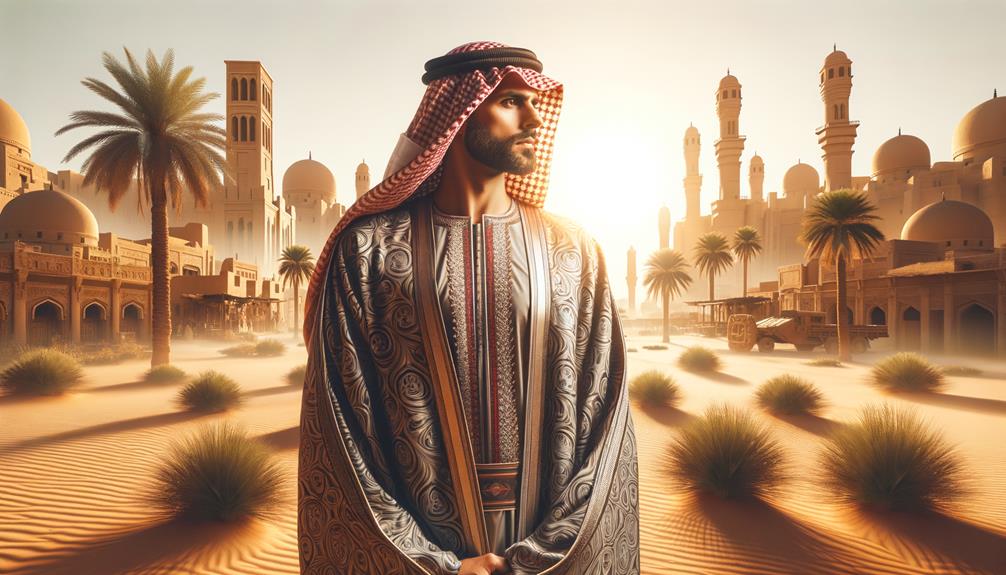
Wearing a thobe goes beyond fashion; it represents our cultural identity and values. When I put on my thobe, I'm not simply dressing up – I'm embracing centuries of tradition and the rich Arab heritage. The thobe signifies modesty and respect, fundamental virtues deeply rooted in our society.
Each Arab region has its distinct thobe style, reflecting the diversity within our shared heritage. Whether at prayers, weddings, or formal events, the thobe serves as a versatile garment that conveys respect for the occasion and those around me.
The cultural significance of the thobe is evident in every stitch and fold. Its loose-fitting design isn't just for comfort; it embodies the principle of modesty, a cornerstone of Arab values. The colors and designs can subtly indicate one's background or status, adding layers of meaning to an already meaningful garment.
In an increasingly innovative world, the thobe stands as a testament to the enduring power of tradition. It reminds me that while we evolve, our roots remain crucial.
Materials and Fabrics
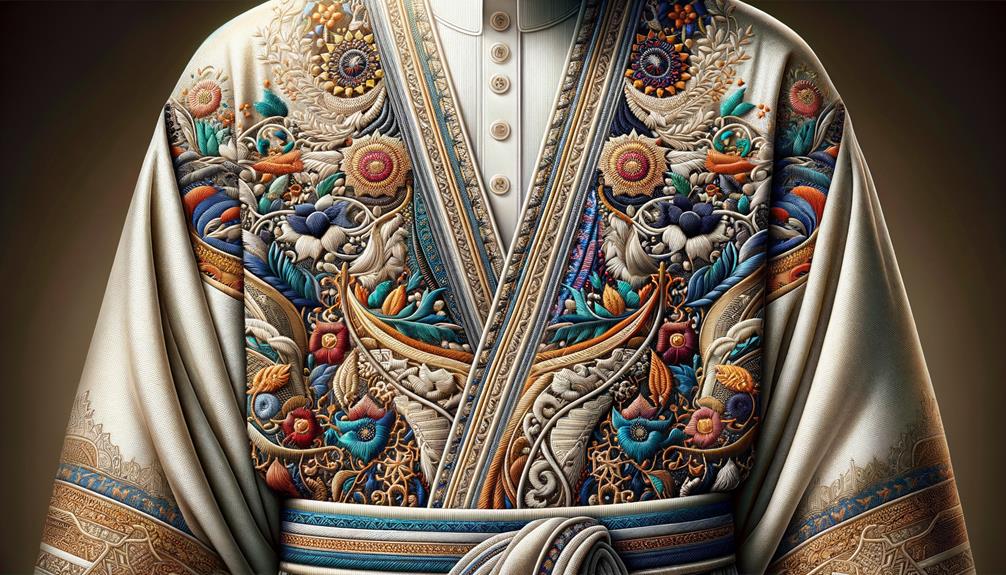
Cotton, linen and polyester blends stitched into thobes aren't just durable – they offer year-round comfort too. These fabrics fuse tradition with modernity, resulting in stylish yet timeless pieces built to last. Whether stepping into the summer heat or braving cooler temperatures, thobes made from these thoughtful textile combinations ensure effortless elegance whenever you suit up.
Traditional Fabric Choices
Thobes woven from cotton, linen, or polyester blends blend classic style with modern convenience. Each fabric caters to different lifestyles and climates. Cotton's softness and easy care make it a go-to for everyday Islamic garments like long-sleeved thobes, especially in cities like Dubai where fashion meets tradition. Lightweight linen thobes provide breathability, perfect for the Arabian Peninsula's sweltering heat.
Traditional Muslim attire like thobes and abayas showcase the versatility of natural fibers. Cotton offers timeless comfort through its breathable weave, whether in a thobe or elegant abaya. Linen's crisp, cooling texture suits hot, arid regions. While more contemporary, polyester blends cater to modern needs with their wrinkle-resistant properties while upholding cultural values.
These fabrics have evolved to meet the diverse requirements of modern Muslim men while preserving their rich sartorial heritage. The choices reflect a harmonious blend of practicality and tradition.
Modern Fabric Innovations
Wrapping myself in my thobe, I can appreciate how modern fabrics transformed this traditional robe into something exceptionally comfortable for today's lifestyle. The long-sleeved kaftan worn by Muslim men now uses materials making everyday wear a breeze.
Premium cotton, linen, and polyester blends offer:
- Wrinkle resistance: No fussing over ironing for busy days.
- Breathability: Keeping cool, even in warm climates.
- Moisture-wicking: Staying dry and fresh.
- Softness: All-day comfort against skin.
These fabrics enhance durability and maintenance, ensuring the thobe remains a wardrobe staple for years. Integrating high-quality materials blends tradition with modernity, making it an ideal choice for the contemporary Muslim man.
Seasonal Fabric Preferences
The changing seasons shape my thobe fabric choices. Summertime calls for breathable cotton or linen to stay cool during sweltering days. Cotton allows airflow, while linen's lightweight texture feels breezy against my skin—ideal when even a breeze feels warm.
As temperatures drop, I switch to polyester blends for their wrinkle resistance and durability. These fabrics balance comfort and practicality, keeping my thobe looking crisp after a day's wear.
Winter demands warmth, so I turn to thicker wool and fleece. A long-sleeved woolen thobe shields me from the morning chill, while a fleece lining provides extra coziness on cold evenings. Each material's unique qualities make my thobe a versatile companion through every season.
Occasions and Uses
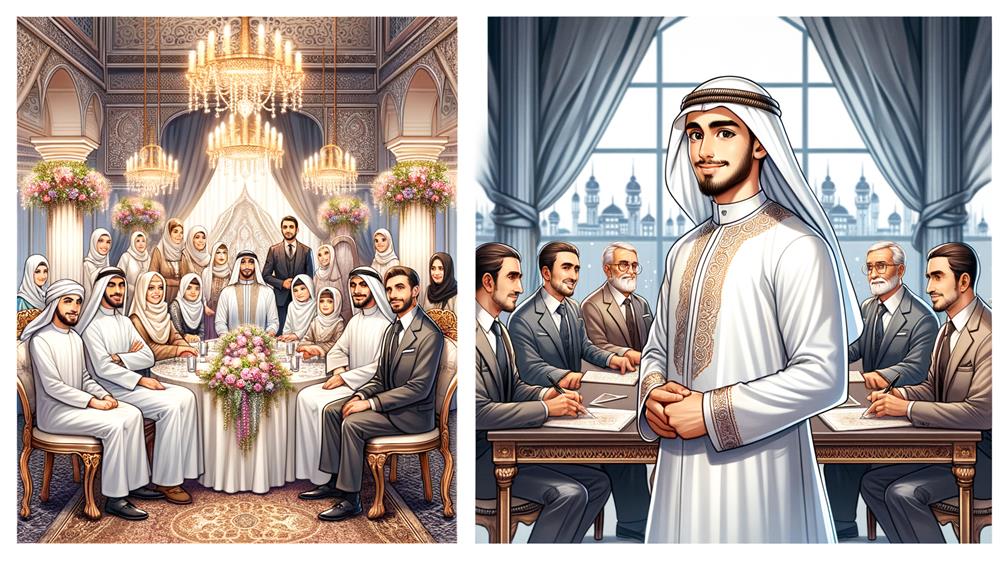
The thobe fits all occasions effortlessly – celebrations like weddings, religious events, or a casual day out. It's intriguing how this traditional robe adapts gracefully to different moments, blending in seamlessly. The versatility of the thobe shines through, transcending specific events to become a part of everyday life.
Traditional Celebrations and Festivals
Traditional celebrations and festivals bring out the vibrant thobe garments worn by Arab men. When I put on my long-sleeved kaftan thobe, I feel an authentic connection to my heritage. The thobe, a staple of Arab dress, represents far more than just Muslim clothing – it's an expression of identity and cultural pride. Whether it's a family wedding or a national holiday, the thobe jubba adds a special touch to the occasion.
These versatile garments hold significance in various events:
- Eid Celebrations: Islamic robes, adorned with intricate embroidery, symbolize joy and reverence during these religious festivities.
- Weddings: An Arabian bisht elegantly draped over the thobe brings formality and sophistication.
- Cultural Festivals: Thobes sport vibrant colors reflecting the festive spirit.
- Generational Tradition: Passed down through generations, each thobe carries stories and memories.
Wearing a thobe during these moments sparks reflection on our rich heritage. It's intriguing to see modern designs seamlessly blend with traditional elements, appealing to an audience seeking authenticity and innovation. These garments have evolved yet remain timeless symbols of cultural pride.
Religious Ceremonies and Prayers
Wearing a thobe during religious events holds deep meaning for me. This long robe represents humility and commitment to faith. As I slip into it for prayers, the simple elegance centers my attention on spirituality.
The thobe isn't just traditional attire, but an outward expression of inner devotion. The flowing sleeves and loose fit ensure ease during worship rituals. Donning this garment connects me to past generations who embraced its modesty.
While the style, color, and fabric vary based on personal taste and occasion, the thobe remains a timeless embodiment of faith's enduring strength. In our rapidly changing world, it grounds me in spiritual values.
Casual and Daily Wear
Slipping into a thobe for casual wear combines relaxation with cultural identity. On an average day, I find myself drawn to this adaptable clothing choice that fluidly marries tradition and modernity. The long sleeves and loose fit create a cozy, unrestricted feel while maintaining a modest appearance.
What catches my eye is how seamlessly a thobe blends into various everyday scenarios. A few instances where it's particularly fitting:
- Casual Hangouts: Meeting pals for coffee or running errands calls for the thobe's laidback yet refined vibe.
- Family Get-Togethers: Its comfort and style strike the perfect balance for informal gatherings.
- Cultural Events: Celebrating Middle Eastern heritage feels more authentic when donning traditional attire.
- Layering: Cooler months allow layering a thobe with other pieces for added warmth and sartorial flair.
Reflecting on its practicality, the thobe functions as an effortless long dress requiring minimal fuss. It transcends mere clothing; it's a symbol of cultural continuity and modernity in daily wear for Middle Eastern men.
Modern Trends
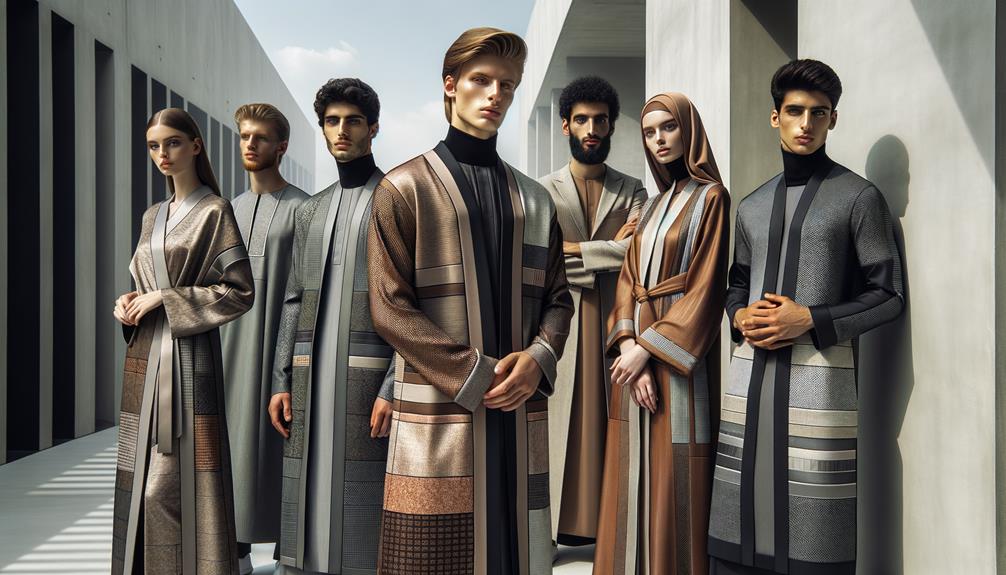
One can't miss the modern thobes deftly combining heritage with contemporary flair. As men's thobes evolve, it's evident that updated cuts and comfy fabrics have revamped this iconic garment. Style-conscious gents now seek thobes honoring cultural roots yet embracing modern aesthetics. The long sleeve persists as an Islamic menswear staple, but silhouettes have become more tailored and streamlined.
Today's Arabian thobes strike a balance between old and new. Crafted from premium materials ensuring durability and comfort, they suit formal and casual settings. The trend favors timeless yet fashionable designs upholding cultural significance. I've noticed the contemporary thobe's versatility, seamlessly complementing diverse wardrobes and appealing to men appreciating tradition and innovation.
Witnessing this progression, it's remarkable how designers create pieces both fashionable and respectful of origins. The modern thobe transcends clothing – it's an identity statement, elegantly bridging past and present.
Frequently Asked Questions
Can Non-Muslims Wear a Thobe?
I've pondered if people outside the Islamic faith can rock a thobe. Embracing diverse styles through fashion feels empowering. Thobes, not exclusively for Muslims, exude style and comfort – a refreshing addition to any wardrobe.
Why Do Saudis Wear Thobes?
Saudis commonly sport thobes, traditional long robes, due to their cultural significance and practicality. The loose, breathable fabric keeps wearers cool in the desert climate while exuding an air of modesty and simplicity valued in Saudi society. Thobes remain a stylish choice for various occasions, blending cultural heritage with modern sensibilities.
What Is the Meaning of Thobe in Arabic?
A simple word like 'thobe' holds deep cultural meaning. In Arabic, it refers to a traditional ankle-length robe, yet it symbolizes far more than attire – it represents identity itself. This garment, steeped in heritage, transcends its material form to embody the cultural essence of a people. What may seem like a mere article of clothing carries the weight of shared customs and values woven into its very fabric. Unpacking the significance of the 'thobe' is an exploration into the nuances of Arabic tradition, reminding us that language is a bridge to understanding the richness of diverse societies.
What Is the Name of the Arab Men's Robe?
The thobe or dishdasha, an Arab man's traditional robe, blends cultural heritage with modern flair. It's a timeless garment that carries profound meaning within its simplicity.



